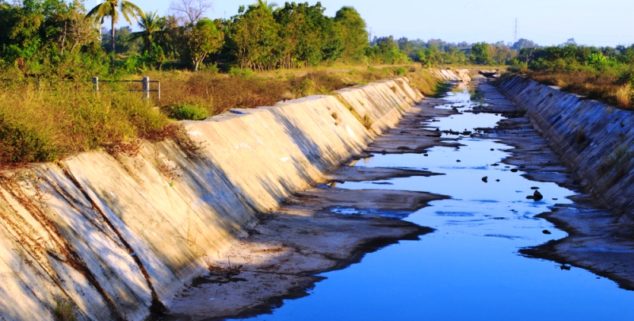Opinion
Why California needs another water bond in 2020
 A photo illustration showing the depletion of water in aging infrastructure. (Image: miophotolap, via Shutterstock) infrastructure.
A photo illustration showing the depletion of water in aging infrastructure. (Image: miophotolap, via Shutterstock) infrastructure.The California Legislature is currently considering several proposals to put a $4 billion bond measure on a 2020 ballot for safe drinking water, drought preparation, wildfire prevention, and climate resilience. An $8.9 billion bond initiative has also been filed by environmental advocates.
Many Californians might ask, “Didn’t we already pay for that?”
The answer is that while California has indeed started to make critical investments in these crucial areas,we’re still playing catch-up after failing for decades to adequately invest in basic infrastructure. More than 1 million Californians still do not have access to safe, clean, reliable drinking water.
Far more funding is still needed. Proposition 1 funding for drinking water has been completely tapped.
Thankfully, we are making good progress. But we are going to continue to need to invest more to ensure that the human right to water enshrined in California law is fulfilled, while we adapt our water systems in the face of climate change.
A new UCLA study, “Striving for Equity in Public Investments in Water in California: An Analysis of Proposition 1 Implementation,” which I conducted with help from Green Info Network, found that midway through the implementation of Proposition 1, a $7.1 billion bond measure approved by the voters in 2014, state funding is reaching disadvantaged communities that most need improvements in their water systems.
There are two keys to this success: Proposition 1 prioritized those communities, and it also provided the resources they need to level the playing field.
While many cities in California have large planning staffs, small communities often have no one to do the research, planning, and engineering required to fix the problems they face. Some communities do not even have a government entity that can take the lead. The community itself has to do the work. A lot of that work comes down to tried and true community organizing — empowering communities with information and then supporting their efforts to organize themselves so that they can advocate for solutions that make the most sense for themselves and their families.
Support from sources such as Proposition 1 has been essential for the success of this work. Proposition 1 has helped fund research, planning, community engagement, and technical assistance for infrastructure projects in disadvantaged communities. This funding has been a difference maker for designing projects that meet community needs and have strong community buy-in.
Unfortunately, far more funding is still needed. Proposition 1 funding for drinking water has been completely tapped. And while the Safe & Affordable Drinking Water Fund, approved by the Legislature and signed into law by the governor this summer, provides$130 million a year for the next decade specifically to address the state’s drinking water crisis—the fund was designed only to cover costs such as operations and maintenance that can’t be covered by bond funding.
We need to pursue three key objectives in order to maintain the progress the state has been making:
–First, we need more bond funding to support capital costs for infrastructure projects—the bricks and mortar, pipes and wells.
–Second, we need to ensure the Safe & Affordable Drinking Water Fund stays true to its intent: to cover costs that bond funding can’t cover.
–Finally, we need to secure commitments in future bonds to support the unique needs of small disadvantaged communities through funding for technical assistance, planning and community engagement.
Bond funding for safe water infrastructure will continue to be an essential part of the mix going forward, as we make California’s guarantee of the human right to water real for the communities most in need in our state.
—
Editor’s Note: Jon Christensen is an adjunct assistant professor in UCLA’s Institute of the Environment and Sustainability.
Want to see more stories like this? Sign up for The Roundup, the free daily newsletter about California politics from the editors of Capitol Weekly. Stay up to date on the news you need to know.
Sign up below, then look for a confirmation email in your inbox.

Leave a Reply